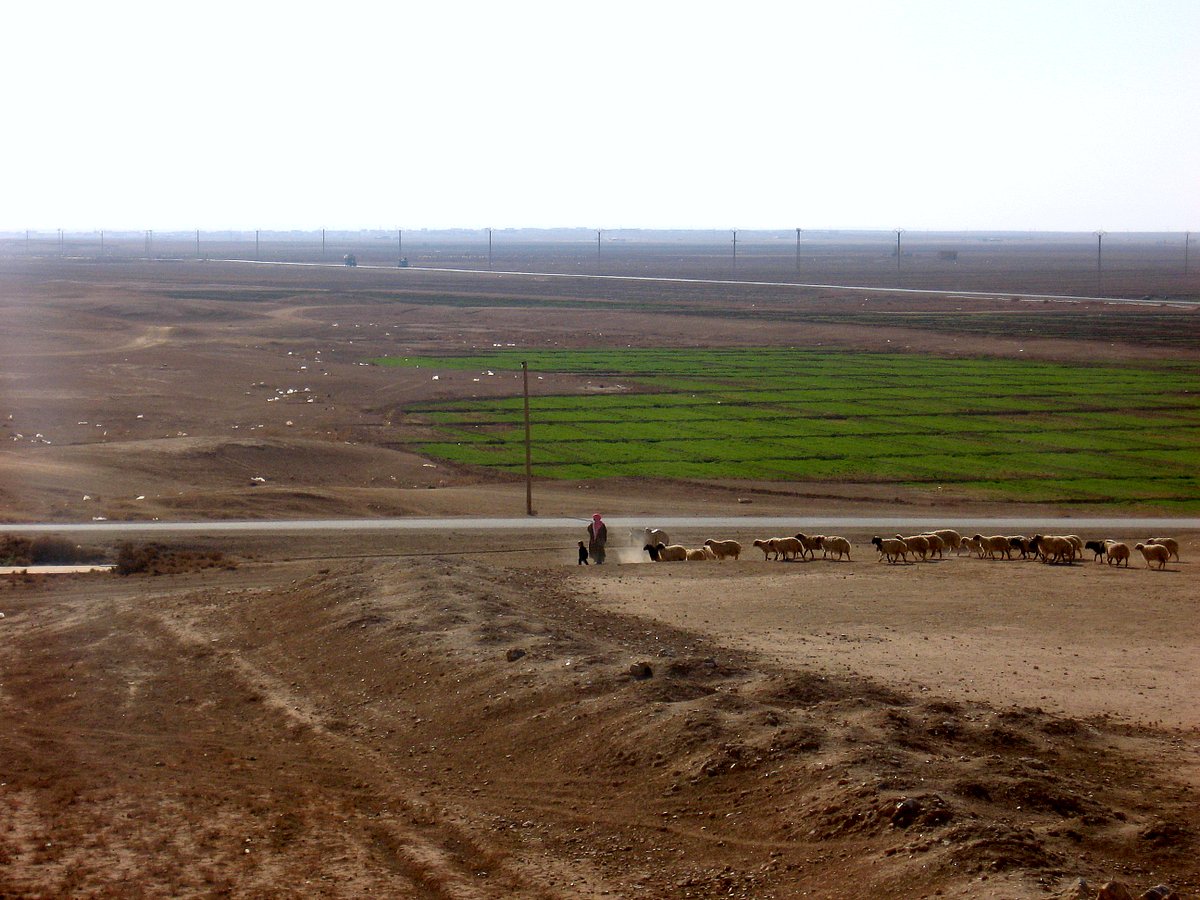In recent weeks large parts of northern Iraq and northeastern Syria have been consumed by flames. Tens-of-thousands of acres of croplands have been burned, threatening agriculture in both regions. The Islamic State (ISIS) is the prime suspect and revenge for the complete destruction of its former self-styled caliphate that once spanned those lands is its prime motive.
In Iraq, the fires are primarily burning in a large disputed region between the central government in Baghdad and the autonomous Kurdish government in Erbil. The former has controlled all of these territories since seizing them with military force in October 2017. ISIS has a larger network of militants who have wreaked havoc in that region long after losing its physical hold on territories there, shrewdly exploiting the lack of coordination between the Iraqi Army and the Kurdish Peshmerga there.
To date, Iraq has not committed any substantial resources to help combat these blazes.
Northeast Syria is currently controlled by a Kurdish-led administration which simply doesn’t have the equipment to tackle these wildfires, as aptly demonstrated by the fact locals are using carpets to try and extinguish them!
Northeast Syria is the ‘bread basket’ of the region and is from where the vast majority of Syria’s agricultural supplies come from.
As journalist Liz Sly noted, this was tragically the one summer in a decade that farmers in both Iraq and Syria had hoped for a bumper harvest since this was hitherto shaping up to be the one year they would not be set back by either drought or war. The damage the fires have caused the landscape can be seen by satellite.
The wildfires have also spread across Sinjar, home of the Yezidi minority ISIS infamously subjected to genocide. Mass graves of the victims have also caught fire, leading to fears that some evidence of ISIS’ crime against humanity there will be destroyed.
ISIS, which readily claimed responsibility, and high temperatures and other factors are likely the main causes of these deadly blazes. The terrorist group previously used this scorched earth tactic on Kurdish farmlands in June 2015 after the Kurds, with U.S. air support, successfully broke their lengthy and ferocious siege on their northern border city of Kobane.
These current fires are clearly an attempt by the group to starve enemy populations, showcase the inability of their government’s to combat then and then once again move to subdue the weakened populations it previously ruled over after conquering large parts of eastern Syria and northwest Iraq in 2013-14. Since ISIS lost its caliphate its underground cells used various tactics, such as murdering village leaders in Iraq and terrorizing villages where the government and security forces have little presence to extort “tax” from locals to fund their terrorist activities. In May, when farmers in Makhmour refused to pay these taxes ISIS set their crops alight.
The Kurds of both Iraq and Syria were major allies in the U.S.-led coalition’s campaign against the Islamic State. In Syria, the Kurdish-led forces were the only major ally the U.S. had on the ground in that country. They sacrificed 11,000 of their men and women to combat and destroy the vast majority of the caliphate in Syria. Over 70 countries are part of the coalition. It’s, therefore, puzzling that none have yet devoted any firefighting assistance or equipment to help tackle these blazes.
Israel has also suffered from wildfires and was assisted in its firefighting efforts by Croatia, Cyprus, Egypt, Greece and Italy. No such assistance has yet been offered in the case of these wildfires raging across the fertile crescent.
Turkey has the equipment and could serve as a logistical hub for other countries to help battle the fires south of its border. However, Turkey sees the Syrian Kurds as indistinguishable from its arch-enemy the Kurdistan Workers’ Party (PKK) and is therefore content with sitting idly by while that quasi-states agriculture is ravaged and its main adversary in Syria consequently weakened.
The U.S. should muster its resources to help both allies on both humanitarian grounds and in recognition that letting these fires burn serves the interests of ISIS. Even a gesture at this stage would be a lot better than nothing.
It’s worth remembering that the U.S. once helped its regional rival Iran deal with a major humanitarian disaster. In December 2003, an earthquake destroyed large parts of Iran’s ancient western city of Bam killing 30,000 people. The U.S., which just a year earlier had declared Iran an “axis of evil”, sent a humanitarian team to Bam to help the many wounded. While the aid was small compared to the vast scale of the disaster America was still one of the largest international donors to Iran during the tragedy.
It goes without saying that if the U.S. could do this to help Iran it can certainly help its allies combat this current tragedy.
Photo: Franco Pecchio

